PowerPoint 2010 includes a brand new feature that allows you to organize slides into various sections to help you easily look for information when you have too many slides in your presentation. You can view the break-up of the slides into sections only in the Slides pane. In this tutorial, learn how to create a section and organize slides into sections in PowerPoint 2010.
How to Organize Slides Into Sections In PowerPoint 2010
Create a Section Break
When you create a section between two slides, the slides above the break form one section and the ones below it form the other section. You can add more than one section to a presentation.
1. In the Slides pane, right-click between two slides.
2.Choose Add Section.
Alternatively, you could add a section break by following these steps:
1. Select the slide you want to use as the first slide in a section.
2. On the Home tab, in the Slides group, click Section.
3. From the drop-down list, select Add Section.
Rename a Section
When you create a section for the first time, it displays a default file name. You can rename the section to reflect a name that suits your presentation needs. To rename a section:
1. Right-click the Untitled Section bar and choose Rename Section;
OR
On the Home tab, in the Slides group, click Section and from the drop-down list, select Rename Section.
2. In the Rename Section dialog box, in the Section name text box, enter a section name.
4. Click Rename.
Reorder the Slides in a Section
You can move the entire bunch of slides in a section by reordering them as per your convenience. Also if you wish to move a large number of slides up or down a presentation, you can use the Sections feature to make the change.
Reorder a section
Right-click the section bar and choose Move Section Up or Move Section Down to move the section up or down the order.
OR
Drag the section bar up or down, to a location you want to in the Slides pane.
Use these simple procedures in your workplace and transform your long lengthy presentations into short neat informational content.
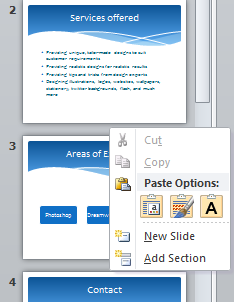
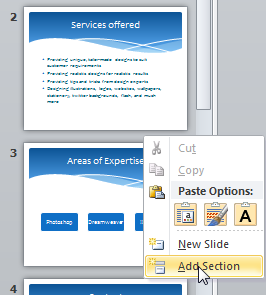
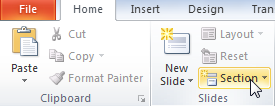
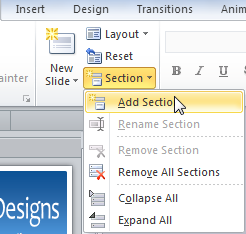
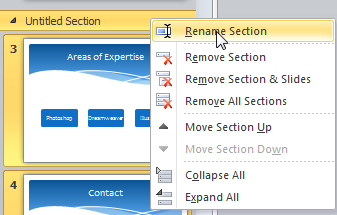
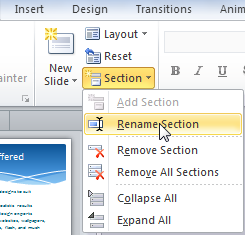


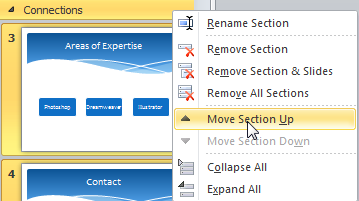
Leave a Reply